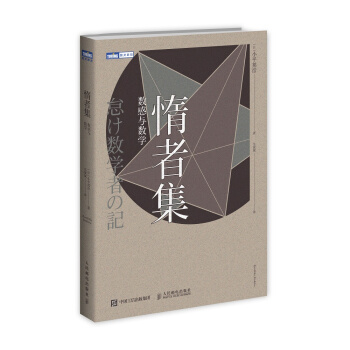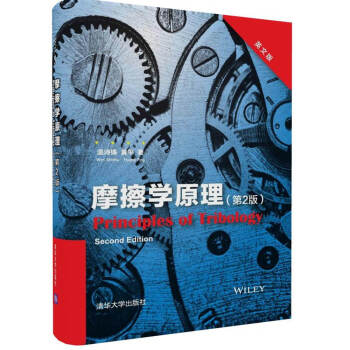

具体描述
编辑推荐
本书汇集摩擦学研究进展以及作者和同事们从事该领域研究的成果,系统地阐述摩擦学的基本原理与应用,全面反映现代摩擦学的研究状况和发展趋势。
全书共21章,由润滑理论与润滑设计、摩擦磨损机理与控制、应用摩擦学等三部分组成。除摩擦学传统内容外,还论述了摩擦学与相关学科交叉而形成的研究领域。本书针对工程实际中各种摩擦学现象,着重阐述在摩擦过程中的变化规律和特征,进而介绍基本理论和分析计算方法以及实验测试技术,并说明它们在工程中的实际应用。
本书可作为机械设计与理论专业的研究生教材和高等院校机械工程各类专业师生的教学参考书,亦可供从事机械设计和研究的工程技术人员参考。
内容简介
本书汇集摩擦学研究的*新进展及作者和其同事从事该领域的研究成果,系统地阐述摩擦学的基本原理与应用,全面反映现代摩擦学的研究状况和发展趋势。
全书共21章,由润滑理论与润滑设计、摩擦磨损机理与控制、应用摩擦学等3部分组成。除摩擦学传统内容外,还论述了摩擦学与相关学科交叉而形成的研究领域。本书针对工程实际中的各种摩擦学现象,着重阐述摩擦过程中的变化规律和特征,进而介绍基本理论、分析计算方法以及实验测试技术,并说明它们在工程中的实际应用。
本书可作为机械设计与理论专业的研究生教材以及高等院校机械工程各类专业师生的教学参考书,也可以供从事机械设计和研究的工程技术人员参考。
作者简介
温诗铸 清华大学精密仪器与机械学系教授。1932年生于江西省丰城市。1955年毕业于清华大学机械制造系后留校任教,历任机械设计教研室主任、摩擦学研究室主任、摩擦学国家重点实验室主任。长期从事机械设计与理论专业的教学和研究,出版《摩擦学原理》(第1、2、3版)、《耐磨损设计》、《弹性流体动力润滑》、《纳米摩擦学》、《界面科学与技术》、《Principles of Tribology》等6部著作,发表学术论文500余篇。获国家自然科学奖二等奖、国家技术发明奖三等奖、全国优秀科技图书奖一、二等奖以及省部级科技进步奖等共19项。1999年被选为中国科学院院士。
目录
Contents
AbouttheAuthorsxvii
SecondEditionPrefacexix
Prefacexxi
Introductionxxiii
PartILubricationTheory1
1PropertiesofLubricants3
1.1LubricationStates3
1.2DensityofLubricant5
1.3ViscosityofLubricant7
1.3.1DynamicViscosityandKinematicViscosity7
1.3.1.1DynamicViscosity7
1.3.1.2KinematicViscosity8
1.3.2RelationshipbetweenViscosityandTemperature9
1.3.2.1Viscosity–TemperatureEquations9
1.3.2.2ASTMViscosity–TemperatureDiagram9
1.3.2.3ViscosityIndex10
1.3.3RelationshipbetweenViscosityandPressure10
1.3.3.1RelationshipsbetweenViscosity,TemperatureandPressure11
1.4Non-NewtonianBehaviors12
1.4.1Ree–EyringConstitutiveEquation12
1.4.2Visco-PlasticConstitutiveEquation13
1.4.3CircularConstitutiveEquation13
1.4.4Temperature-DependentConstitutiveEquation13
1.4.5Visco-ElasticConstitutiveEquation14
1.4.6NonlinearVisco-ElasticConstitutiveEquation14
1.4.7ASimpleVisco-ElasticConstitutiveEquation15
1.4.7.1Pseudoplasticity16
1.4.7.2Thixotropy16
1.5WettabilityofLubricants16
1.5.1WettingandContactAngle17
1.5.2SurfaceTension17
1.6MeasurementandConversionofViscosity19
1.6.1RotaryViscometer19
1.6.2Off-BodyViscometer19
1.6.3CapillaryViscometer19
References21
2BasicTheoriesofHydrodynamicLubrication22
2.1ReynoldsEquation22
2.1.1BasicAssumptions22
2.1.2DerivationoftheReynoldsEquation23
2.1.2.1ForceBalance23
2.1.2.2GeneralReynoldsEquation25
2.2HydrodynamicLubrication26
2.2.1MechanismofHydrodynamicLubrication26
2.2.2BoundaryConditionsandInitialConditionsoftheReynoldsEquation27
2.2.2.1BoundaryConditions27
2.2.2.2InitialConditions28
2.2.3CalculationofHydrodynamicLubrication28
2.2.3.1Load-CarryingCapacityW28
2.2.3.2FrictionForceF28
2.2.3.3LubricantFlowQ29
2.3ElasticContactProblems29
2.3.1LineContact29
2.3.1.1GeometryandElasticitySimulations29
2.3.1.2ContactAreaandStress30
2.3.2PointContact31
2.3.2.1GeometricRelationship31
2.3.2.2ContactAreaandStress32
2.4EntranceAnalysisofEHL34
2.4.1ElasticDeformationofLineContacts35
2.4.2ReynoldsEquationConsideringtheEffectofPressure-Viscosity35
2.4.3Discussion36
2.4.4GrubinFilmThicknessFormula37
2.5GreaseLubrication38
References40
3NumericalMethodsofLubricationCalculation41
3.1NumericalMethodsofLubrication42
3.1.1FiniteDifferenceMethod42
3.1.1.1HydrostaticLubrication44
3.1.1.2HydrodynamicLubrication44
3.1.2FiniteElementMethodandBoundaryElementMethod48
3.1.2.1FiniteElementMethod(FEM)48
3.1.2.2BoundaryElementMethod49
3.1.3NumericalTechniques51
3.1.3.1ParameterTransformation51
3.1.3.2NumericalIntegration51
3.1.3.3EmpiricalFormula53
3.1.3.4SuddenThicknessChange53
3.2NumericalSolutionoftheEnergyEquation54
3.2.1ConductionandConvectionofHeat55
3.2.1.1ConductionHeatHd55
3.2.1.2ConvectionHeatHv55
3.2.2EnergyEquation56
3.2.3NumericalSolutionofEnergyEquation59
3.3NumericalSolutionofElastohydrodynamicLubrication60
3.3.1EHLNumericalSolutionofLineContacts60
3.3.1.1BasicEquations60
3.3.1.2SolutionoftheReynoldsEquation62
3.3.1.3CalculationofElasticDeformation62
3.3.1.4Dowson–HigginsonFilmThicknessFormulaofLineContactEHL64
3.3.2EHLNumericalSolutionofPointContacts64
3.3.2.1TheReynoldsEquation65
3.3.2.2ElasticDeformationEquation66
3.3.2.3Hamrock–DowsonFilmThicknessFormulaofPointContactEHL66
3.4Multi-GridMethodforSolvingEHLProblems68
3.4.1BasicPrinciplesofMulti-GridMethod68
3.4.1.1GridStructure68
3.4.1.2DiscreteEquation68
3.4.1.3Transformation69
3.4.2NonlinearFullApproximationSchemefortheMulti-GridMethod69
3.4.3VandWIterations71
3.4.4Multi-GridSolutionofEHLProblems71
3.4.4.1IterationMethods71
3.4.4.2IterativeDivision72
3.4.4.3RelaxationFactors73
3.4.4.4NumbersofIterationTimes73
3.4.5Multi-GridIntegrationMethod73
3.4.5.1TransferPressureDownwards74
3.4.5.2TransferIntegralCoefficientsDownwards74
3.4.5.3IntegrationontheCoarserMesh74
3.4.5.4TransferBackIntegrationResults75
3.4.5.5ModificationontheFinerMesh75
References76
4LubricationDesignofTypicalMechanicalElements78
4.1SliderandThrustBearings78
4.1.1BasicEquations78
4.1.1.1ReynoldsEquation78
4.1.1.2BoundaryConditions78
4.1.1.3ContinuousConditions79
4.1.2SolutionsofSliderLubrication79
4.2JournalBearings81
4.2.1AxisPositionandClearanceShape81
4.2.2InfinitelyNarrowBearings82
4.2.2.1Load-CarryingCapacity83
4.2.2.2DeviationAngleandAxisTrack83
4.2.2.3Flow84
4.2.2.4FrictionalForceandFrictionCoefficient84
4.2.3InfinitelyWideBearings85
4.3HydrostaticBearings88
4.3.1HydrostaticThrustPlate89
4.3.2HydrostaticJournalBearings90
4.3.3BearingStiffnessandThrottle90
4.3.3.1ConstantFlowPump91
4.3.3.2CapillaryThrottle91
4.3.3.3Thin-WalledOrificeThrottle92
4.4SqueezeBearings92
4.4.1RectangularPlateSqueeze93
4.4.2DiscSqueeze94
4.4.3JournalBearingSqueeze94
4.5DynamicBearings96
4.5.1ReynoldsEquationofDynamicJournalBearings96
4.5.2SimpleDynamicBearingCalculation98
4.5.2.1ASuddenLoad98
4.5.2.2RotatingLoad99
4.5.3GeneralDynamicBearings100
4.5.3.1InfinitelyNarrowBearings100
4.5.3.2SuperimpositionMethodofPressures101
4.5.3.3SuperimpositionMethodofCarryingLoads101
4.6GasLubricationBearings102
4.6.1BasicEquationsofGasLubrication102
4.6.2TypesofGasLubricationBearings103
4.7RollingContactBearings106
4.7.1EquivalentRadiusR107
4.7.2AverageVelocityU107
4.7.3CarryingLoadPerWidthW/b107
4.8GearLubrication108
4.8.1InvoluteGearTransmission109
4.8.1.1EquivalentCurvatureRadiusR110
4.8.1.2AverageVelocityU111
4.8.1.3LoadPerWidthW/b112
4.8.2ArcGearTransmissionEHL112
4.9CamLubrication114
References116
5SpecialFluidMediumLubrication118
5.1MagneticHydrodynamicLubrication118
5.1.1CompositionandClassificationofMagneticFluids118
5.1.2PropertiesofMagneticFluids119
5.1.2.1DensityofMagneticFluids119
5.1.2.2ViscosityofMagneticFluids119
5.1.2.3MagnetizationStrengthofMagneticFluids120
5.1.2.4StabilityofMagneticFluids120
5.1.3BasicEquationsofMagneticHydrodynamicLubrication121
5.1.4InfluenceFactorsonMagneticEHL123
5.2Micro-PolarHydrodynamicLubrication124
5.2.1BasicEquationsofMicro-PolarFluidLubrication124
5.2.1.1BasicEquationsofMicro-PolarFluidMechanics124
5.2.1.2ReynoldsEquationofMicro-PolarFluid125
5.2.2InfluenceFactorsonMicro-PolarFluidLubrication128
5.2.2.1InfluenceofLoad128
5.2.2.2MainInfluenceParametersofMicro-PolarFluid129
5.3LiquidCrystalLubrication130
5.3.1TypesofLiquidCrystal130
5.3.1.1TribologicalPropertiesofLyotropicLiquidCrystal131
5.3.1.2TribologicalPropertiesofThermotropicLiquidCrystal131
5.3.2DeformationAnalysisofLiquidCrystalLubrication132
5.3.3FrictionMechanismofLiquidCrystalasaLubricantAdditive136
5.3.3.1TribologicalMechanismof4-pentyl-4′-cyanobiphenyl136
5.3.3.2TribologicalMechanismofCholesterylOleylCarbonate136
5.4ElectricDoubleLayerEffectinWaterLubrication137
5.4.1ElectricDoubleLayerHydrodynamicLubricationTheory138
5.4.1.1ElectricDoubleLayerStructure138
5.4.1.2HydrodynamicLubricationTheoryofElectricDoubleLayer138
5.4.2InfluenceofElectricDoubleLayeronLubricationProperties142
5.4.2.1PressureDistribution142
5.4.2.2Load-CarryingCapacity143
5.4.2.3FrictionCoefficient144
5.4.2.4AnExample144
References145
6LubricationTransformationandNanoscaleThinFilmLubrication147
6.1TransformationsofLubricationStates147
6.1.1Thickness-RoughnessRatio??147
6.1.2TransformationfromHydrodynamicLubricationtoEHL148
6.1.3TransformationfromEHLtoThinFilmLubrication149
6.2ThinFilmLubrication152
6.2.1PhenomenonofThinFilmLubrication153
6.2.2TimeEffectofThinFilmLubrication154
6.2.3ShearStrainRateEffectonThinFilmLubrication157
6.3AnalysisofThinFilmLubrication158
6.3.1DifficultiesinNumericalAnalysisofThinFilmLubrication158
6.3.2Tichy’sThinFilmLubricationModels160
6.3.2.1DirectionFactorModel160
6.3.2.2SurfaceLayerModel161
6.3.2.3PorousSurfaceLayerModel161
6.4Nano-GasFilmLubrication161
6.4.1RarefiedGasEffect162
6.4.2BoundarySlip163
6.4.2.1SlipFlow163
6.4.2.2SlipModels163
......
精彩书摘
PropertiesofLubricants
Many.uidsserveaslubricantsinindustry.Amongthem,oilandgreasearethemostcommonlyused.Air,waterandliquidmetalsarealsousedasspeciallubricants;forexample,liquidsodiumis often used as a lubricant in nuclear reactors. In some situations, solid lubricants, such as graphite,molybdenumdisul.deorpolytetra.uoroethylene(PTFE)canalsobeused.Inthis.rstchapter we will discuss the viscosity and density of lubricants, as they are the two importantphysicalpropertiesassociatedwithlubrication.
Inlubricationtheory,themostimportantphysicalpropertyofalubricantisitsviscosity,themostimportantfactorindeterminingthelubrication.lmthickness.Inhydrodynamiclubrica-tion, the lubricant .lm thickness is proportional to the viscosity, while in elastohydrodynamiclubricationitisproportionaltotheviscositytothepowers0.7.Althoughinboundarylubrica-tiontheviscositydoesnotdirectlyin.uencethe.lmthickness,theoilpackagesformedbetweenpeaksandvalleysofroughnesswillcarrypartoftheload.Thereforelubricantviscosityisclosely
命relatedtoitsload-carryingcapacity.命
Furthermore, viscosity is also an important factor in.uencing the frictional force.A high-viscosity lubricant not only causes a lot of friction loss, but also produces a lotof heat, which make cooling control di.cult. Because temperature rise caused by frictioncan lead to failure of the lubricant .lm, the surface will be worn increasingly. Therefore, areasonableviscosityisrequiredforpracticallubrication.
前言/序言
SecondEditionPreface
ThiseditionofPrinciplesofTribology,basedonthefirstedition,isformedbyrevisingtheinadequacies
oftheoriginaleditionanditsbeingimprovedinresponsetothehotspotsofrecent
tribologyresearch.Sincethebookwasfirstpublished,thereadershaveofferedvarioussuggestions
andopinions,andgiventhedevelopmentsintribologyresearch,wethoughtitnecessary
tomakethisrevisionofthebook.
Althoughoneimportanttaskforthiseditionwastomakesomeerrorcorrections,itretains
thebasicframeworkofthefirstedition,with21chaptersinthreeparts.
Also,inresponsetotherapiddevelopmentofhigh-speedrailwaysandtheimplementation
ofthelunarexplorationprojectinChina,rollingfrictionhasbecomemoreimportant,soitis
broughtintoaseparatechapter(11).Althoughinthepreviousversion,rollingfrictionwasmentioned
asatypicalphenomenonoffriction,weonlygavesomebasicdefinitions.InChapter11,
wegivemoredetailonrollingfrictiondefinitions,rollingfrictiontheoriesandstick-slipphenomena
inrollingfriction,aswellascontactandheatgenerationofrollingfrictionbetween
wheelandrail.Infact,rollingfrictionexistswidelyintransportation,automobile,machinery
manufacturing,productionanddailylife,andithasfunctionswhichcannotbesubstitutedby
slidingfriction.
AnothernewareaofcontentinthiseditionistribologyresearchinMEMS
(micro-electromechanicalsystem)coveredinChapter20.Thisincludestheapplication
ofatomicforcemicroscopyintribologyofMEMS,micromotortribologyresearchandmicro
analysisofwearmechanisms.Thiscontentisfocusedonrecenttribologyresearchandthe
rapiddevelopmentofMEMS.
Also,ecologicaltribology,ahottopicintribologyresearch,hasbeenintroducedin
Chapter21.Thischapterincludeszerofrictionandsuperlubrication,greenlubricatingoil,
friction-inducednoiseanditscontrol,plusremanufacturingtechnologiesandself-repairing
technology.Ecologicaltribologyresearchwillbecomeanimportantresearchdirectionforthe
future.
Ofcourse,thenewcontentisfarmorethanjustrollingfriction,MEMStribologyandgreen
tribology,butlimitedspacehereprecludesmoredetailedcoverageoftheadditions.Wehope
thatthecontentsofthebookwillbemoresystematicandaccurateinthisedition.
Wepresentourmostsincerethankstoourcolleaguesandgraduatestudentsfortheirenthusiastic
support,andtoalltheotherswhohaveprovidedhelpandmadeacontributiontothe
developmentoftribologyresearchingeneralandthiseditioninparticular.
March2016WenShizhu
HuangPing
用户评价
第四段评价: 这本书的深度毋庸置疑,它在对润滑剂添加剂的协同效应方面的分析达到了业界领先的水平。作者对极压(EP)添加剂在极端高温高压下,如何通过化学反应在金属表面形成保护膜的机理,进行了近乎于微观粒子的追踪式描述。通过对比分析了磷、硫、氯等不同元素基添加剂在不同载荷下的反应速率和膜层厚度的变化曲线,展现了极其精湛的材料科学功底。然而,这种深度也带来了一个副作用:时间敏感性。由于摩擦学领域新技术,尤其是在纳米润滑和智能流体材料方面发展迅猛,这本书即便更新到第二版,在某些章节中提到的“最新进展”也可能已经略显陈旧。例如,对于新型类金刚石镀膜(DLC)在超低摩擦系数应用中的局限性讨论,似乎没有充分考虑到近几年在表面改性技术上取得的突破。所以,它更像是一部扎实的理论基石构建手册,而非反映行业脉搏的活字典。读者需要清楚,这本书的价值在于提供坚实的理论框架,而不是最新的产品手册。
评分第三段评价: 这是一本充满了“硬核”科学的著作,阅读过程中需要时刻保持高度的专注力,因为它几乎没有使用任何辅助性的叙述手法来减轻读者的认知负担。作者的文字风格极其严谨、克制,几乎没有使用任何比喻或者生活化的例子来解释那些艰深的现象,每一个论断都直接建立在严密的逻辑推导之上。我尝试将其中关于边界润滑的分子间相互作用力的章节拿来做案例分析,发现即便是在讲解最基础的范德华力在摩擦过程中的作用时,它也直接跳跃到了更高级的量子化学计算模型。这使得非专业背景的读者——比如我这样主要从事机械设计,对材料化学背景了解不深的人——很难跟上其思维的节奏。全书充斥着复杂的张量分析和偏微分方程,很多页数被密密麻麻的公式占据,这使得信息密度达到了极限。我感觉自己不是在阅读一本介绍摩擦学原理的书,而是在重温高等物理的习题集。对于希望从实践中学习的工程师来说,这本书可能会让人感到有些“学究气”过重,缺乏对实际设备制造公差和环境温度波动等实际工程约束的考量。
评分第五段评价: 翻阅全书,最让我印象深刻的是其对“摩擦学系统”整体观的强调,这超越了单纯的材料对材料的接触研究。作者花费了大量篇幅探讨了环境因素——湿度、空气成分、振动频率——是如何通过复杂的耦合作用影响摩擦系数的动态变化的。比如,它详细解析了在特定频率的振动激励下,润滑油膜的剪切行为如何发生非线性转变,进而导致摩擦力出现周期性振荡的现象。这种对系统集成复杂性的关注,是很多传统摩擦学书籍所忽略的。但是,这种宏大的叙事结构也牺牲了对基础概念的重复强调和强化训练。对于那些习惯了通过大量例题来巩固知识点的读者来说,这本书提供的“自我测试”环节明显不足。它假设读者已经完全掌握了基础知识,可以直接进入系统建模和复杂现象分析的阶段。因此,我发现自己不得不频繁地翻阅外部资料,去补习书中直接跳过的那些基础实验原理和经典测试方法,这无疑减慢了我的学习进度。它无疑是一部里程碑式的作品,但它更像是一位经验丰富的教授在向资深同行传授其毕生观察所得,而非一位耐心的导师在引导新手入门。
评分第二段评价: 这本书的结构安排实在有些出人意料,它似乎更侧重于展示摩擦学领域前沿的学术争论点,而非系统梳理经典知识体系。我注意到,书中对不同学派对“粘附理论”的解释进行了非常详尽的对比分析,这固然能拓宽视野,但同时也使得核心概念的提炼变得模糊不清。举个例子,关于润滑膜破裂的临界应力计算,书中给出了至少三种不同的经验公式,每种公式的适用范围和推导基础都阐述得极为细致,读完后我反而更困惑于在实际操作中应该采纳哪一个。排版方面,插图的数量似乎偏少,而且很多关键的实验装置示意图都过于简化,这对于理解复杂的测试环境设置造成了不小的障碍。对于我这种习惯了图文并茂的学习方式的人来说,必须经常停下来,自己动手绘制草图来辅助理解那些抽象的理论描述。这本书更像是一本供学者进行深度研讨的“辩论集”,而不是一本旨在普及基础知识的教科书。如果作者能更清晰地标示出哪些是公认的经典理论,哪些是尚存争议的前沿探索,阅读体验会大大改善。
评分第一段评价: 最近翻阅了这本书,说实话,感觉它更像是一部深度研究报告的汇编,而不是一本面向初学者的入门教材。书中对各种摩擦、磨损和润滑现象的物理和化学机制探讨得极其深入,引用的文献和实验数据详实得令人咋舌。我尤其欣赏作者在阐述接触理论时那种层层递进的逻辑,从宏观的接触面积计算到微观的表面形貌对摩擦行为的影响,几乎没有放过任何一个细节。然而,对于那些试图快速掌握“如何应用”的工程师来说,这本书的门槛可能太高了。它更像是为那些已经有坚实力学和材料学基础的研究生或资深研究人员准备的案头参考书。那些希望找到清晰的、手把手的润滑剂选择指南或者常见工程问题的快速诊断流程图的读者,可能会在这本书的浩瀚的理论海洋中感到迷失。它要求读者具备高度的抽象思维能力,才能将那些复杂的数学模型和本构方程与实际的工程应用场景建立起有效的联系。总而言之,这是一部学术价值极高的作品,但其阅读体验更像是在攻克一道复杂的数学难题,而非轻松获取知识。
相关图书
本站所有内容均为互联网搜索引擎提供的公开搜索信息,本站不存储任何数据与内容,任何内容与数据均与本站无关,如有需要请联系相关搜索引擎包括但不限于百度,google,bing,sogou 等
© 2025 book.coffeedeals.club All Rights Reserved. 静流书站 版权所有

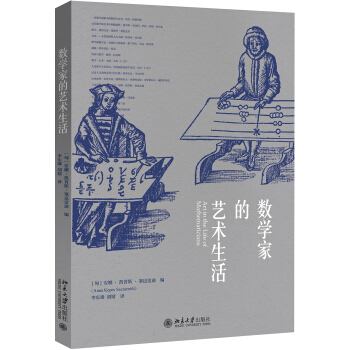
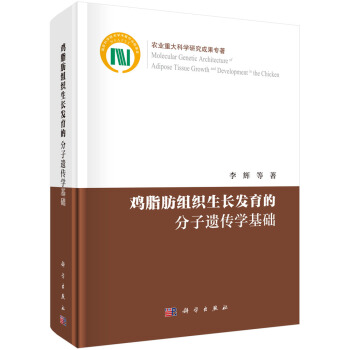
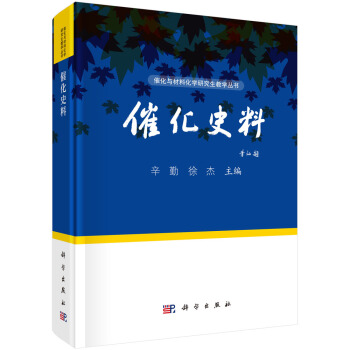


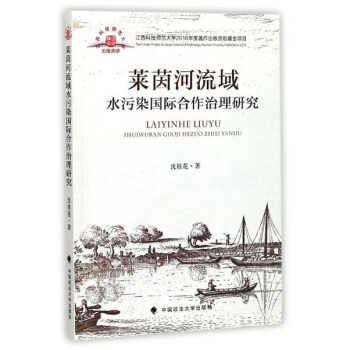
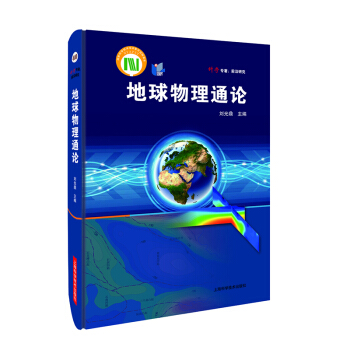
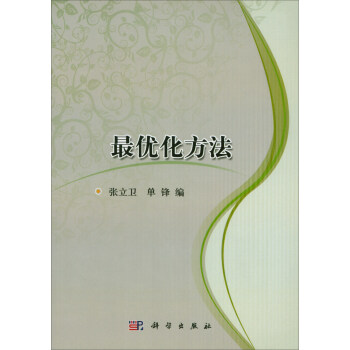

![西伯利亚资源地理 [Siberian resources geography] pdf epub mobi 电子书 下载](https://pic.windowsfront.com/12267316/5a2e449cN945dd725.jpg)
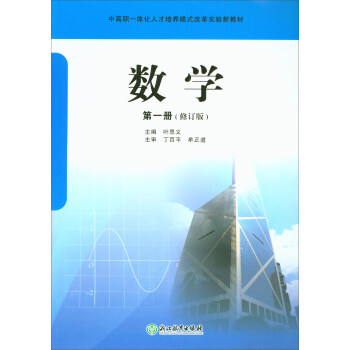
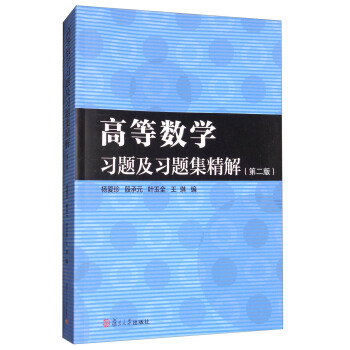
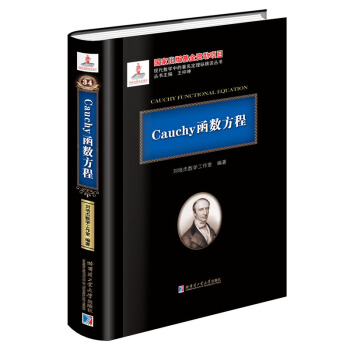
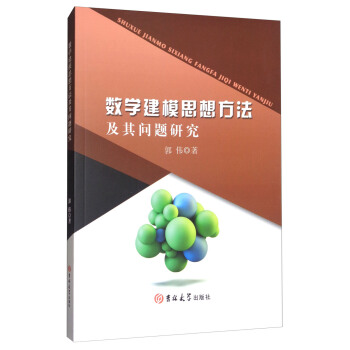
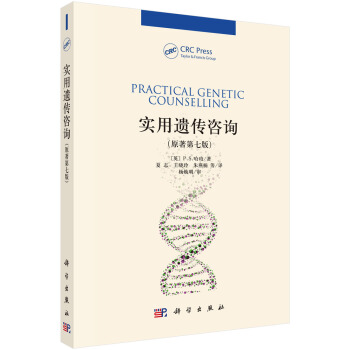
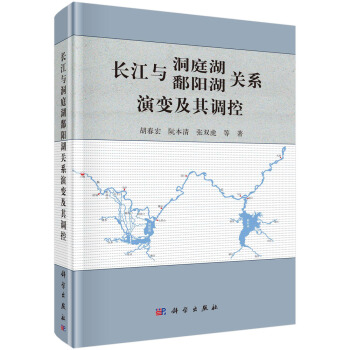
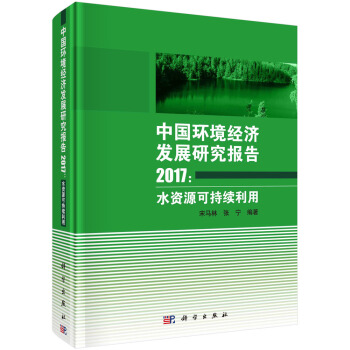
![环境管理蓝皮书:中国环境管理发展报告(2017) [Annual Report on Development of Environmental Management in China(2017)] pdf epub mobi 电子书 下载](https://pic.windowsfront.com/12269583/5a71aa9bN7545adb8.jpg)
![蜜蜂:诺贝尔获奖者弗里希科普代表作 [BEES:THEIR VISION,CHEMICAL] pdf epub mobi 电子书 下载](https://pic.windowsfront.com/12269588/5a13d71cNdbf8ffea.jpg)
